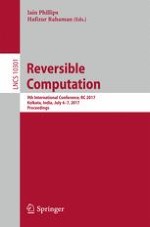2017 | Book
Reversible Computation
9th International Conference, RC 2017, Kolkata, India, July 6-7, 2017, Proceedings
Editors: Iain Phillips, Hafizur Rahaman
Publisher: Springer International Publishing
Book Series : Lecture Notes in Computer Science
